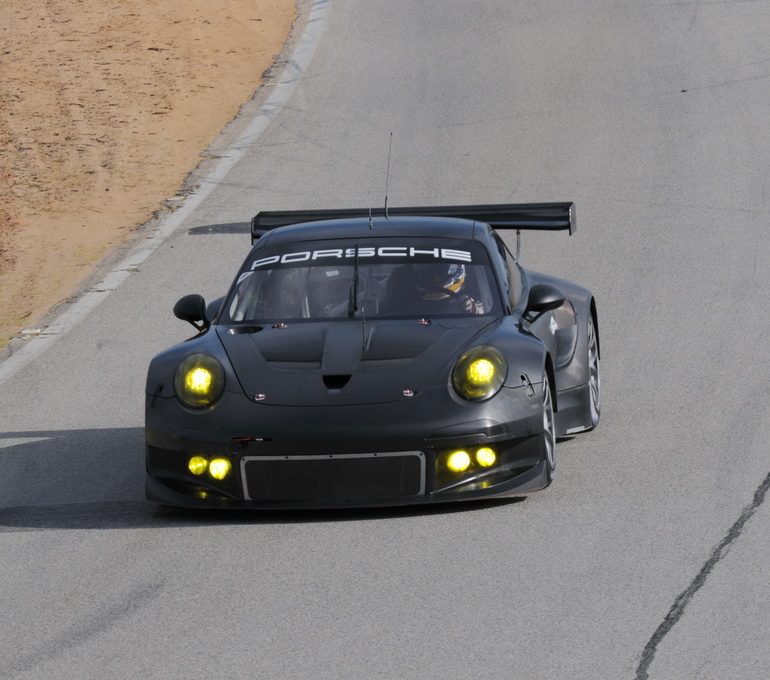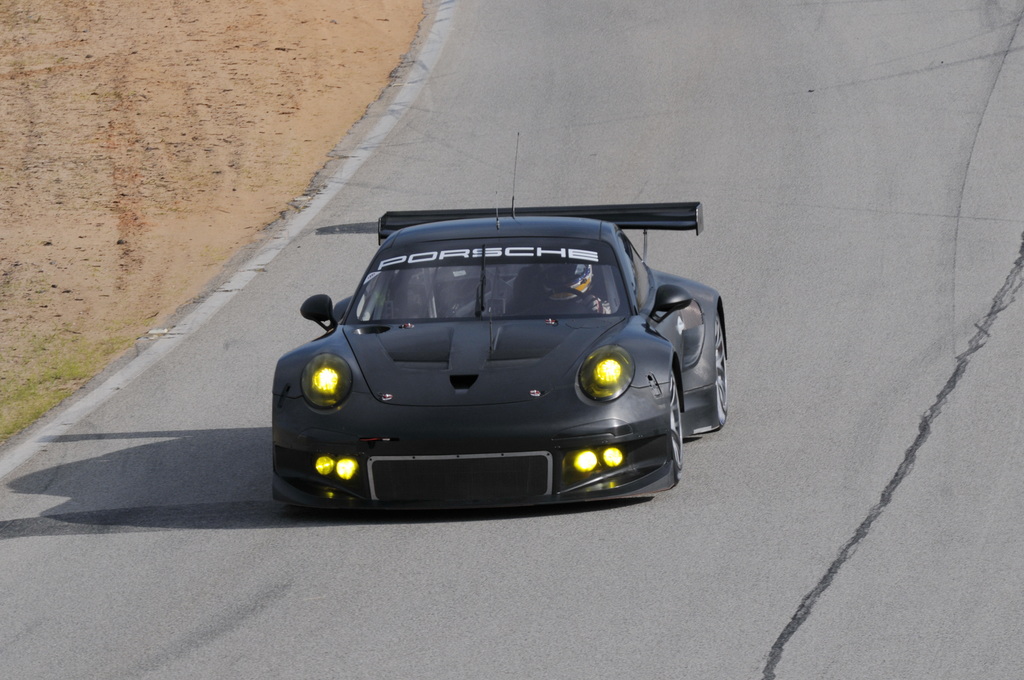2013 Porsche 911 RSR
Porsche has developed a new GT race car for the World Endurance Championship (WEC) and the Le Mans 24 Hours. The new 911 RSR is characterised by consequent lightweight design and sophisticated aerodynamics. The exceptional vehicle styling honours a very special anniversary: From a bird’s eye perspective, the numbers 50 and 911 are visible. These stand for 50 years of the Porsche 911. The Porsche AG Team Manthey works squad exclusively fields two Porsche 911 RSR in the 2013 season.
The new 911 RSR, which is based on the seventh generation of the iconic 911 sports car, follows in the footsteps of its successful predecessor, the 911 GT3 RSR. As with the production vehicle, the wheelbase grew by about ten centimetres. A new wishbone front suspension replaces the previously used McPherson struts. Another new development from Porsche Motorsport is the particularly lightweight racing gearbox. The six gears are selected via paddles on the steering wheel. The 460 hp, 4.0-litre six-cylinder boxer engine was taken from the predecessor and optimised in detail.
One of the priorities in the development of the new 911 RSR was the more evenly balanced weight distribution. The centre of gravity is also significantly lower than that of its predecessor. Carbon fibre played a crucial role in the new design. The front and rear mudguards, front and rear lids, doors, underbody, wheel arches, rear wing, dashboard and centre console are constructed from the very light and strong material. Moreover, all windows are made of particularly thin and light polycarbonate. Also contributing to the weight reduction is the lithium-ion battery known from the GT road-legal models.
The look of the new 911 RSR is dominated by the flared mudguards and the deep cooling air intakes at the front. With the new air ducting, the radiator is now centrally-located in the front and even more effective than in the previous model. At the same time, the cockpit air conditioning became more efficient. The quick-change concept of the body parts was specially adapted for endurance racing, allowing for easier maintenance and shorter repair times. The front end, front lid and rear panel are fitted with quick release systems and can be replaced within seconds.
Competing in the Porsche 911 RSR with starting number 92 are Porsche works drivers Marc Lieb (Germany) and Richard Lietz (Austria), who already shared a cockpit in the 2012 WEC. At the first two races of the season in Silverstone (14.4) and Spa (4.5) as well as at the 24 Hours of Le Mans (22.6), they receive support from their works driver colleague Romain Dumas (France). Factory pilots also drive the #91 sister car, with Joerg Bergmeister (Germany) and Patrick Pilet (France) making up a team. In Silverstone, Spa and Le Mans, the duo is joined by Timo Bernhard (Germany).
Story by Dr. Ing. h.c. F. Porsche Aktiengesellschaft
In Detail
| type | Racing Car |
| built at | Weissach, Germany |
| engine | B6 w/Dry Sump Lubrication, 29.5 mm Air Restrictors |
| position | Rear, Longitudinal |
| valvetrain | 4 Valves per Cyl |
| body / frame | Unit Steel w/Welded-In Roll cage |
| f suspension | McPherson Struts |
| r suspension | Multi-Link Struts |
| transmission | 6-Speed Sequential |
| tran clutch | 3-Plate Carbon-Fibre |







